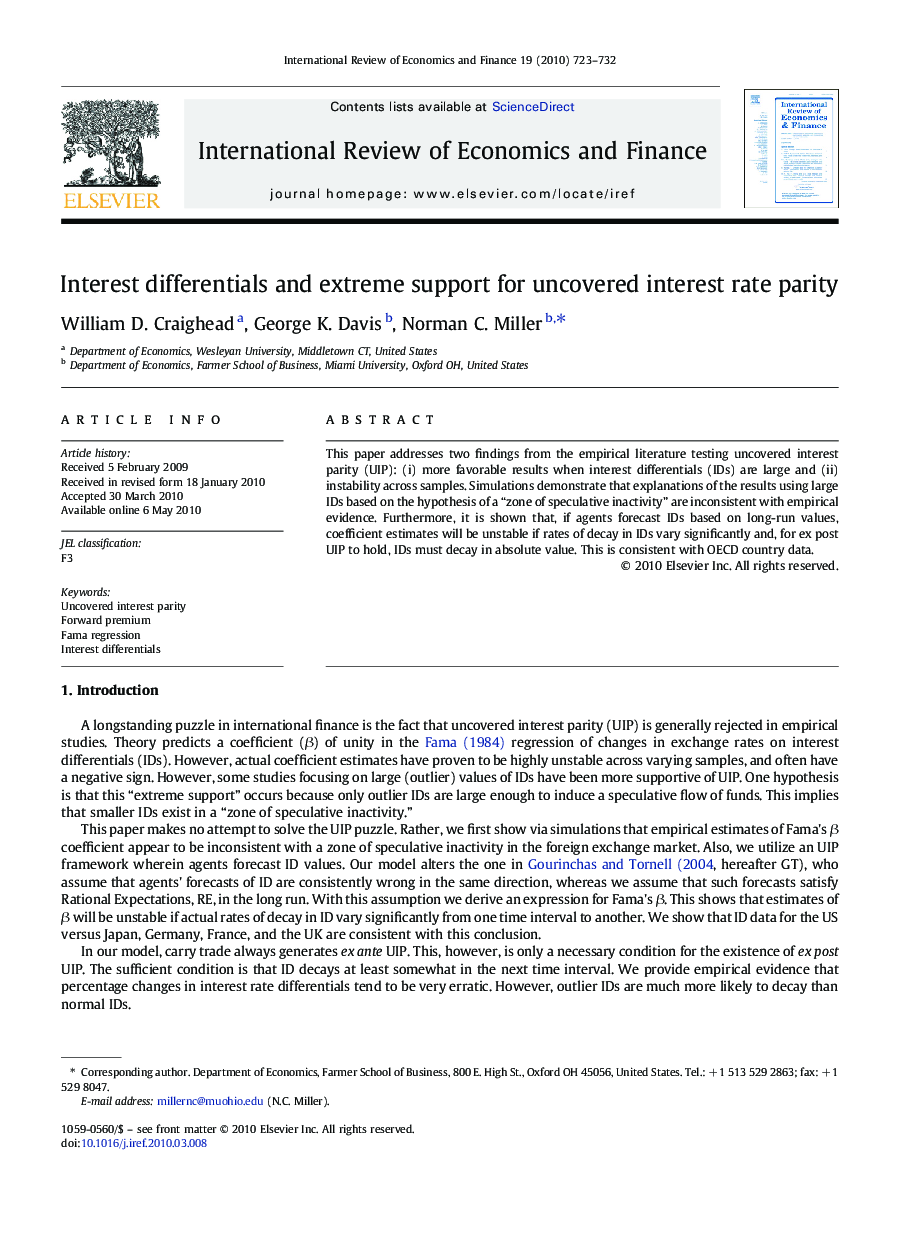| Article ID | Journal | Published Year | Pages | File Type |
|---|---|---|---|---|
| 5084031 | International Review of Economics & Finance | 2010 | 10 Pages |
Abstract
This paper addresses two findings from the empirical literature testing uncovered interest parity (UIP): (i) more favorable results when interest differentials (IDs) are large and (ii) instability across samples. Simulations demonstrate that explanations of the results using large IDs based on the hypothesis of a “zone of speculative inactivity” are inconsistent with empirical evidence. Furthermore, it is shown that, if agents forecast IDs based on long-run values, coefficient estimates will be unstable if rates of decay in IDs vary significantly and, for ex post UIP to hold, IDs must decay in absolute value. This is consistent with OECD country data.
Related Topics
Social Sciences and Humanities
Economics, Econometrics and Finance
Economics and Econometrics
Authors
William D. Craighead, George K. Davis, Norman C. Miller,
